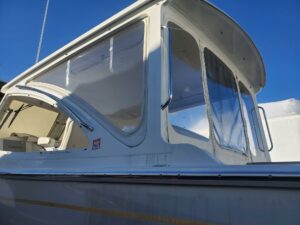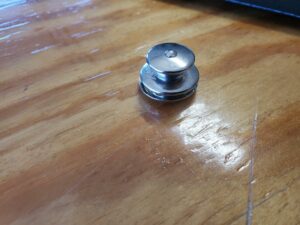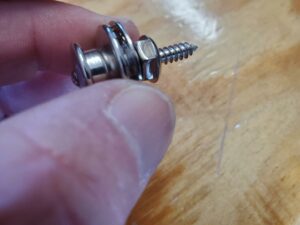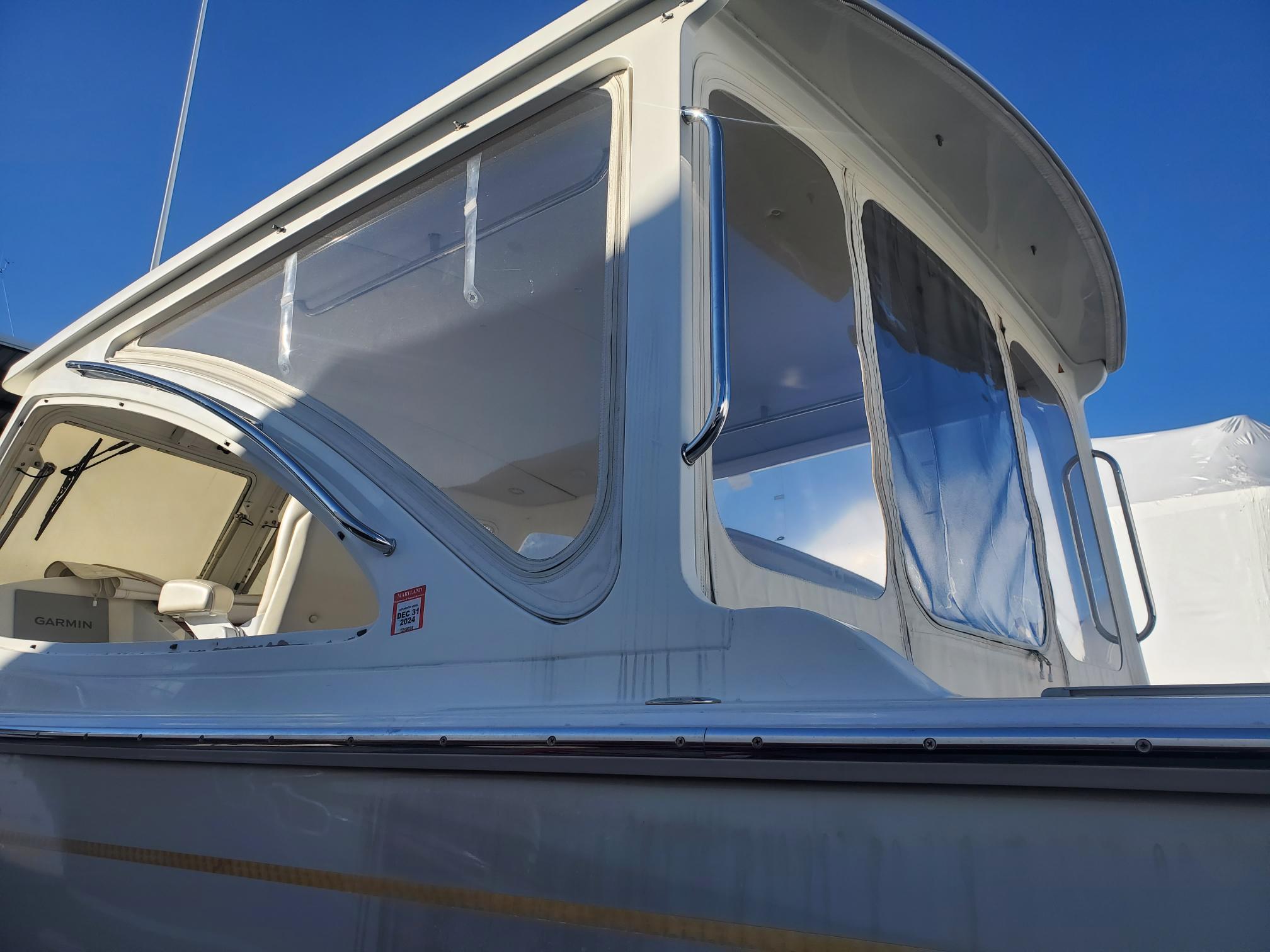Boat canvas plays a crucial role in protecting your vessel from the elements and enhancing its aesthetic appeal. Whether it’s a bimini top, cockpit cover, or full boat enclosure, proper care ensures longevity and functionality. Unfortunately, when you walk the docks at your local marina, you see lots of canvas that are in various states of disrepair. In this blog we will explore the different types of canvas and best uses, different ways to attach canvas to your boat, and essential boat canvas care tips
There are a couple of options for boat canvas:
- Solution-dyed Acrylic Canvas, also known as Sunbrella, is probably the most popular choice for seating covers, cockpit seating, and bimini tops. It gets high marks for durability, UV resistance, and vibrant color options. It is easy to fold and fabricate, though a hot knife should be used to cut the fabric to eliminate fraying. Because it is a woven fabric that doesn’t have a sheen, it can collect dirt on the surface (especially seen on lighter colors) and should be cleaned regularly.

- Vinyl Coated Polyester, also known as Stamoid, is a heavy-duty canvas commonly used for boat enclosures and cushion covers. It provides excellent water resistance, durability and UV resistance. Dirt doesn’t collect as quickly on the surface due to the smooth vinyl coating. Because of this, it is probably the best choice for white or light-colored enclosures or covers.
- Polyester Canvas is a more affordable option when compared to Acrylic Canvas or Vinyl Coated Polyester, but it may not be as durable. It is a woven material, but has a bit of a sheen compared to Acrylic Canvas
- Vinyl-coated Polyester Mesh, also known as Textiline or Phifertex, is a great option for exterior window covers and canopies where you want to preserve your view out. Depending on the weave, these fabrics provide a 70% to 96% shade factor, easing the work on your boat’s air-conditioner but also providing you with an outside view.
- Clear Vinyl for windows in your Canvas dodgers and enclosures. The ‘pressed and polished’ manufacturing technique of Strataglass and others provides a better optical quality to the vinyl but is also more expensive. The vinyl comes in gauges, ranging from 12 to 60. Generally, the higher gauge (thicker) vinyl provides better optical quality and is less wavy but is more difficult to roll and stow and sew. 40 gauge is a great choice for dodgers and enclosures that don’t need to be rolled often.
Attaching Canvas to your Boat.
There are also a couple of options to attach canvas to your boat:
- Snaps – Snaps are the most popular way of attaching canvas to boats. They are inexpensive, easy to install and easy to use. Their main drawback is that there isn’t a positive lock on the fastener, so a strong gust of wind can undo the fastener by pulling on the underlying fabric.

- Boltrope – Bolt rope is a great option for attaching large fabric canopies or covers if there is room to attach and hide the boltrope channel. The bolt rope is very strong and pulls on the fabric evenly, eliminating point loads of other fasteners.
- Loxx Fasteners – This is a great replacement for snaps where you need a more secure connection for boat canvas. Loxx fasteners require you to pull up on the button on top of the fastener before it disengages from the pin. Loxx fasteners are significantly more
 expensive than snaps but may save you from losing your seating covers in a storm.
expensive than snaps but may save you from losing your seating covers in a storm. - Stay-Put Fasteners – Stay-put uses a small bungee cord that loops around a knob to keep a cover attached. The bungee applies tension to the cover, keeping the cover tightto your boat and reducing the chance of wind getting under the cover. These fasteners are easy to install and use.
Cleaning and Maintenance:
Start by regularly cleaning your boat canvas to prevent the buildup of dirt, salt, and mildew. If you have mold and mildew present, a bit of bleach in a soap and water solution can remove it from the surface. You can also wash smaller acrylic canvas covers in the washing machine. Larger canvas covers can be soaked in a bathtub. Take extreme care with your clear vinyl windows by only use microfiber towels and non-abrasive cleaners specifically for clear vinyl. If the stitching is starting to fall apart from use or UV degradation, your canvas maker may be able to re-stitch the material and give you a couple more years of use. If your Acrylic canvas starts to get holes or tears easily (tears like paper) then it is time to replace the canvas. You should get about 8-10 years of use out of your boat canvas before it will need to be replaced (depending on the amount of UV exposure). By incorporating these tips into your boating routine, you’ll ensure that your boat canvas remains in top-notch condition, ready to protect your vessel for years to come.


